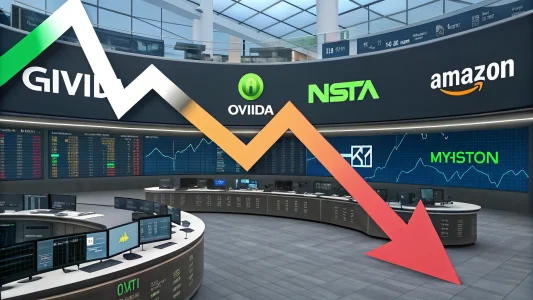We spend a lot of time examining and discussing the latest payment trends. Since we’re involved in the payments industry, that’s what we’re supposed to do.
However, we sometimes get carried away and assume that every demographic is up-to-speed on the latest payment options available. The fact of the matter is that different demographics prefer different payment options.
With that being said, here’s a closer look at the different demographics prefer different payment options based on age, income, and gender.
Table of Contents
ToggleAge
As previously discussed here at Due, age plays a major role in how we chose to transfer funds from one party to another.
- Seniors. This group is composed of people over the age of 66. While they do use a variety of payment methods, this age group used checks more than any other demographic. When it come to plastic, 32% of seniors prefer debit cards, while 38% have selected credit cards. Most interesting, their preferred credit card is American Express. In fact, 28% of seniors own an Amex card. They’re also the least likely to embrace peer-to-peer payments apps, online banking, or cryptocurrencies
- Baby boomers. Those between the ages of 45-65 still prefer paper-based payment methods. However, they’re willing to use electronic payment options like Automated Clearing House (ACH) debits and bank online bill pay. 43% of Boomers prefer using debit cards, while 17% have used P2P.
- Generation X. This group consists of people between the ages of 31-44, with 49% preferring to use debit cards. But, since they’re young enough to understand technology, they’re willing to replace their physical wallets with digital versions. 25% of this demographic are already using P2P options.
- Millennials. This demographic, which is made-up of people between 18-30, have replaced Baby Boomers as the largest age demographic. Since they’ve grown-up with technology at their fingertips, they’re the group leading the digital wallet revolution – specifically in Asia-Pac. In fact, 42% of Millennials would prefer to make purchases with their smartphones. Millennials are also the group most likely to use eCash like bitcoin. However, Millennials also use plastic. In fact, more than half of millennials use credit or debit when making purchases of less than $5 – particularly debit cards. Despite embracing newer forms of payments, over half of this demographic still prefer to get paid in cold, hard cash.
Income
According to the 2015 Diary of Consumer Payment Choice, “income has a strong influence on payment preference.” It was found that households that earn less than $25,000 annually have a particularly strong cash preference, with 48 percent preferring cash. 37% preferred debit cards, with 9% selecting credit.
43% of households earning between $25,000 to $49,999 preferred debit cards, followed by cash (25%) and credit (24%).
Households making $50,000 to $74,999 preferred debit (53%), credit (26%), and cash (19%). Those in the $75,000 to $99,999 bracket prefer debit (48%), credit (33%), and cash (18%). Anyone earning between $100,000 to $144,999 are split between credit and debit at 39%, with 19% choosing cash.
Finally, households making over $150,000 annually overwhelmingly prefer credit (53%), followed by debit (28%) and cash (14%). However, according to the TSYS 2016 U.S. Consumer Survey, a whooping 69% of households earning more than $150,000 prefer to use credit cards.
When you examine both reports, you can see that the more money you bring home annually, the more likely your preferred payment method will be credit cards. This is a big factor in why richer and diverse/different demographics prefer different payment options.
When it comes to the most payment instrument use by income, cash, debit, and credit cards still dominate across the board. What’s interesting is that electronic instruments rise when incomes do. For instance, only 5% of those earning less than $25,000 embrace electronic methods. But, that jumps to 16% if you earn over $150,000.
Checks, meanwhile, hover around 5% to 7% no matter how much you’re bringing home annually.
Gender
Based on surveys commissioned by the National Bank of Austria 1996, 2000, 2005 and 2011, it was found that;
- Cash remains the payment method of choice for Austrian shoppers, but its share has declined gradually from over 95% of all payment transactions in 1996 to 85% for men, and from over 97% to over 81% for women.
- Debit card usage has increased from 1.7% to 12% of transactions for men, and from 0.9% to 15.6% for women.
- The report also found that the share of credit card payments remained small, and women made fewer purchases with credit cards than men.
Additionally, recent Worldpay research found that;
- 80% of men make desktop purchases, compared to 72% of women.
- 16% of women are engaging with mobile devices, compared to just 11% of men.
- 53% of women in China pay for goods on their mobile device. This is almost twice the amount of engagement than other countries! Fortunately, female shoppers in the USA, Australia, and Mexico are starting to follow suit.
The Bottom Line with Payment Options
If you’re a merchant, it’s important that you understand which payment methods your target audience wants to use so that you can tailor your payment processes to their preferences, which can increase your sales and nurture long-term relationships with your customers.
The thing is, no matter the demographic, your customers prefer payment methods based on availability, speed, and convenience. And, despite the fact that we’re moving towards a digital currency, cash and debit cards are still extremely popular payment options. To please as many demographics as possible, it would be wise to accept a mix of payment options. But, don’t neglect the methods that your specific audience demands.














